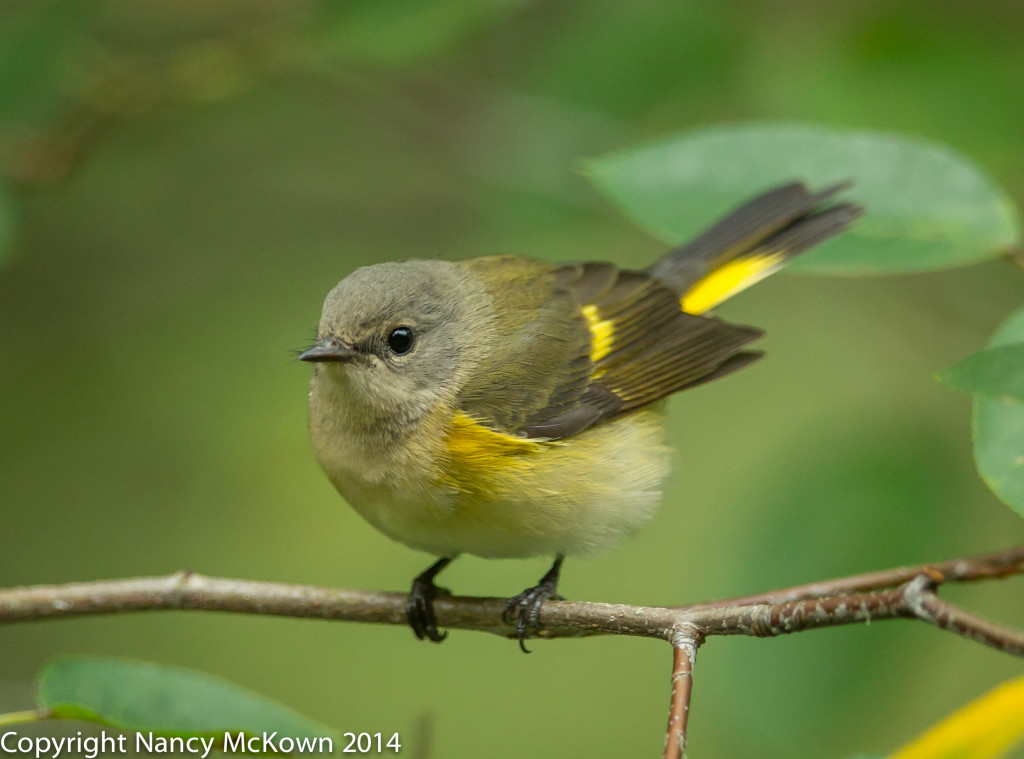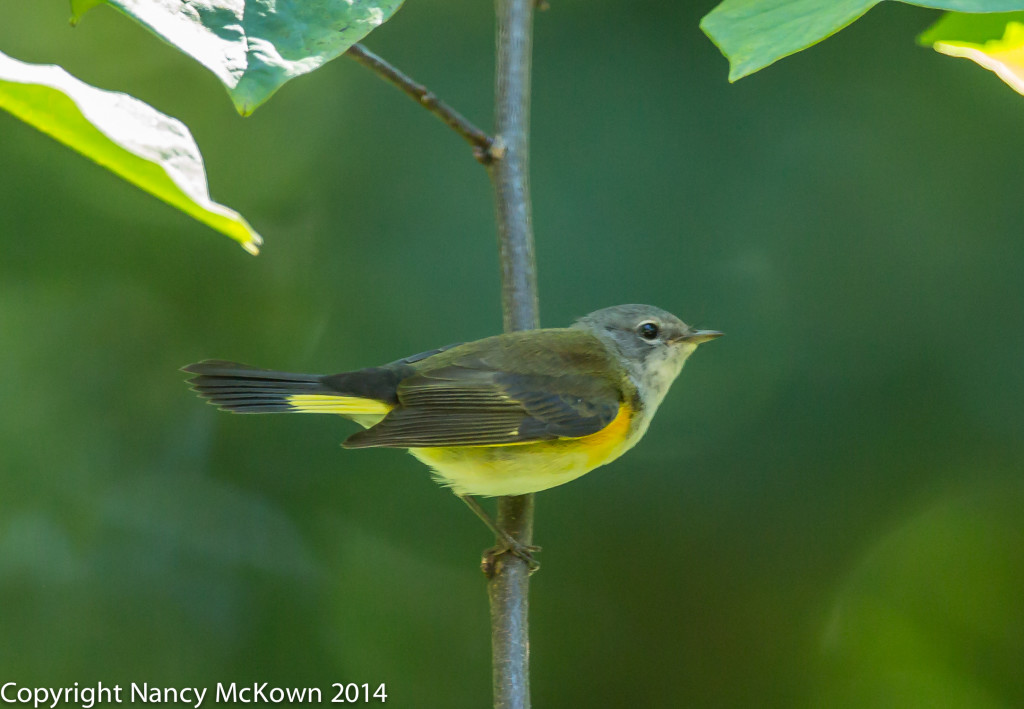Photographing the American Redstart Warbler
I have to admit. I’ve come to love photographing warblers- especially warblers uncommon to our yard. The American Redstart Warblers are especially fun to discover because they are tiny, compact balls of energy. They are not particularly shy (as warblers go) and once in a while, their curiosity will get the better of them.

Attracting American Redstarts to Our Backyard
The migration map for the American Redstart Warblers shows that they nest in SW Michigan, but this is the first time we’ve seen this species around us. These are conspicuous warblers, but they do not frequent back yards. The female American Redstart does not have the dramatic black and orange halloween colors like the male, but she is still easy to identify when she flashes the orange and yellow patches on her shoulders, wings and spread tail feathers.
My warbler book states that these warblers respond well to PISHING. This practice may enticed them to visit back yards (assuming the habitat is inviting).
What is PISHING?
PISHING is a sound made by birders and researchers to entice a hidden bird to come out into the open. It sounds like this.
Basically, the call slowly repeats “pish-h-h- h-h” three or four times, and then follows that with “chit, chit, chit, chit, chit, chit, chit”. The goal is to get the bird to approach more closely. It’s not meant to be delivered continually or loudly. That would only frighten away the birds. A soft and brief delivery is recommended for the best response. I’m sure many birders have developed their own unique PISH sound and style of delivery.

My First Attempt at PISHING
I thought I’d try to entice the female American Redstart Warblers that I had seen in the dense brush to come out into the open by making the PISHING sound. I set up my camera on the porch near a red bud tree that had lost most of its fall leaves. I sat quietly on a stool behind the camera and started my PISHING imitation, hoping for a close approach.
Birds did come to look me over, but only the ones that frequent our feeders. The female American Redstart Warbler was not interested enough to come out from behind the bushes. I photographed her in the brush where she seemed most comfortable.
Birds attracted to PISHING
This PISH sound, delivered appropriately, has been documented by researchers and ornithologists to attract birds. As it is not specific to a particular bird, the caller will have to be vigilant and purposeful. A moderate and respectful delivery is required. Using PISHING indiscriminately, without any particular bird in mind, is an annoyance and a waste of time. You most likely will lure in the species of birds who are commonly seen and not difficult to photograph. Bird species that best respond to pishing are Chickadees, Finches, Jays, Kinglets, Nuthatches, Sparrows, Titmice, Tits, Warblers, and Wrens.
Odd But True
I find it fascinating to speculate as to why PISHING works. The success rate surely has a lot to do the amount of other ambient noise, other birdsong, weather conditions, and predators. To learn more about the art of PISHING and why it works, please visit this most entertaining web pdf called “Bringing In The Birds”.
To see all of the warblers and vireos photographed in our yard during the Fall of 2014, see this flickr Link.









